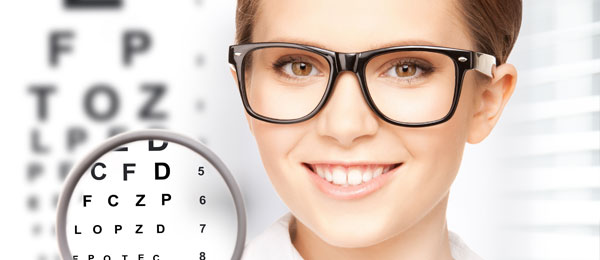
The simplest form of lens, for correcting near vision, is worn for reading, sewing etc, but will probably make distance vision blurred. This means that someone may have a pair of spectacles simply for reading but cannot use them to drive or watch TV. It will probably be necessary to keep removing them when speaking to colleagues at work, for example. However, there are several alternatives that solve this problem.
Half Eyes: If someone has good distance vision, they might choose half eyes. These are shallow frames designed to enable a person to look over the top of the frame when distance vision is needed. However, this design is a disadvantage if the near task is above the top of the lens.
Bifocals: These are special lenses which are plain (or have a prescription for distance vision if required) in the top half of the lens and a prescription for the near vision (reading) in the lower half.
Progressive or Varifocal Lenses: Some people find the dividing line distracting or are concerned about the appearance of bifocal lenses. Progressive or Varifocal lenses (some people call them bifocals without lines) solve this. These lenses progress gradually from distance strength at the top to reading strength at the bottom, giving a range of focusing strength in between and are becoming very popular.
